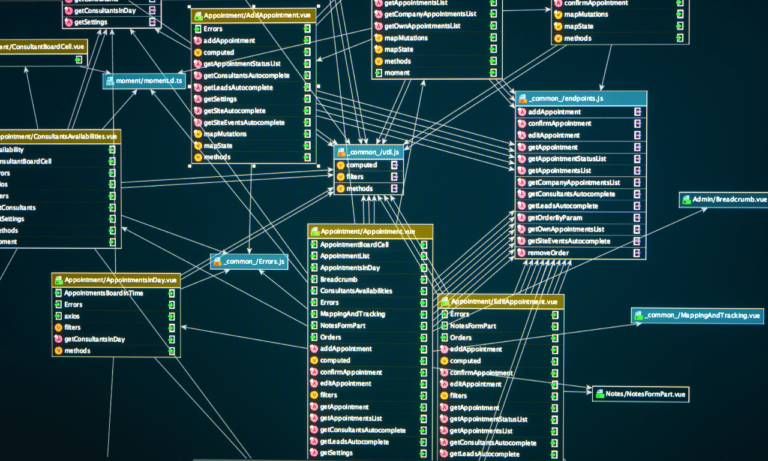Phone:
(+65)8319-0742
Embarking on a journey to master a new language can be as thrilling as it is daunting. However, with the right language acquisition strategies, success is well within grasp for learners of any age. For educators in particular, the challenge is two-fold: they must facilitate content mastery while also nurturing the language development scaffold essential for English Language Learners (ELLs). This is where the critical concept of scaffolding in education steps in, serving as a vital educational tool.
Originating in the late 1950s and championed by Jerome Bruner, scaffolding in education has emerged as a cornerstone method for engaging students, especially those new to the English language. This approach involves instructors supporting their students by connecting new concepts and language with their prior knowledge, creating a gradual learning pathway. Such strategies are designed not merely to teach but to build a foundation for independent mastery and confidence, mitigating frustration and boosting accomplishment among ELLs.
Key Takeaways
- Scaffolding provides a structure for ELLs, promoting growth in language and content understanding.
- Strategic use of language acquisition strategies can minimize student frustration and enhance success.
- Building upon prior knowledge through scaffolding in education facilitates smoother and effective language development.
- Gradual learning pathways afforded by scaffolding encourage independent mastery among language learners.
- A supportive learning environment is key to ELL student engagement and the consolidation of new language skills.
Understanding Scaffolding in Language Education
The term Scaffolding for Language Acquisition echoes the methods Jerome Bruner, an esteemed cognitive psychologist, introduced to the educational landscape. Rooted in supportive structures to advance understanding, scaffolding is instrumental in language learning.
At the crux of scaffolding is the imperative for educators to provide a framework upon which learners can construct their language capabilities. Bruner’s concepts are especially significant in settings where language learning techniques are crucial for student progression.
The Origins and Theory Behind Scaffolding
Jerome Bruner’s legacy in language education is tied to his insight that learners need certain support structures in the initial stages of language acquisition. Mirroring the way caretakers naturally offer guidance through language learning, formal education has adapted these principles to foster academic growth.
The Zone of Proximal Development (ZPD), formulated by Lev Vygotsky, champions the idea that learners excel when performing tasks slightly above their independent level but within their capacity when supported. It is within this zone that effective scaffolding truly enhances a studentâs linguistic evolution.
The Impact of Scaffolding on Language Development
Scaffolding aids in segmenting complex tasks, aligning instruction to a student’s ZPD, and ensuring new language and concepts are delivered in manageable parcels. The impact on language development is thus twofold: it supports immediate engagement with new material and contributes to long-term language proficiency.
| Technique | Scaffolding Application | Result on Language Acquisition |
|---|---|---|
| Dialogue and Interaction | Guided discussion with strategic questioning | Enhances communicative competence |
| Modeling | Demonstrating language use in context | Facilitates understanding and retention |
| Visual Aids | Usage of charts, images, and maps | Creates associative connections |
| Chunking | Breaking down information into smaller units | Aids in processing and internalizing new concepts |
Through these pivotal elements, scaffolding becomes a bridge for students to reach newfound heights of language comprehension and usage, proving revolutionary for educators and learners alike.
Scaffolding for Language Acquisition

Effective language learning scaffolding techniques are pivotal in equipping learners with the skills necessary for acquiring a new language. For English Language Learners (ELLs), language acquisition support is essential, and scaffolding provides this by breaking down the learning process into achievable steps. A structured approach to presenting linguistic information can vastly improve how ELLs assimilate and utilize new language concepts. For instance, employing verbal scaffolds such as “think-aloud” modeling, can give students insights into the cognitive processes behind understanding and using language.
Further verbal scaffolding components such as intentionally slowing speech, using contextual definitions, and simplifying questions also contribute to more inclusive learning environments that accommodate the varied pace of ELLs’ language development. These techniques help create a bridge between a student’s current linguistic abilities and the knowledge they strive to acquire.
| Scaffolding Technique | Description | Benefit to ELLs |
|---|---|---|
| Verbal Scaffolds | Adjusted speech, simplified language, repetition, and ‘think-aloud’ strategies | Improves understanding and facilitates verbal language processing |
| Procedural Scaffolds | Visual aids, graphic organizers, and discussion prompts | Offers practical tools to support comprehension and communication |
| Ample Wait Time | Providing extra time for student responses | Allows students to process language and articulate thoughts with less pressure |
The use of procedural scaffolds further complements verbal methods, incorporating tangible resources and hands-on tools that support language acquisition support. Visual aids and organizers can clarify complex ideas, scaffold discussions that promote critical thinking, and provide much-needed wait-time for students to formulate their responses. These scaffolds are not merely academic niceties but essential steps in nurturing language proficiency among ELLs.
Strategic integration of language learning scaffolding techniques in educational settings can therefore significantly optimize the success of language acquisition endeavors. When scaffolds are applied thoughtfully, they empower learners to reach their full potential in language competencies, respecting the rigorous academic standards our educational systems maintain.
Key Benefits of Scaffolded Learning for ELL Students

The adoption of effective language learning methods through the implementation of scaffolded learning brings forth substantial benefits for English Language Learner (ELL) students. This educational framework lays the groundwork for not just improved language skills but also for the holistic development of learners. By integrating various language learning techniques into the curriculum, instructors pave the way for significant strides in language acquisition and cognitive growth.
Fostering a Supportive Learning Environment
At the heart of scaffolded instruction lies the nurturing of a supportive learning atmosphere. Within this environment, teachers employ scaffolds that align with effective language learning methods to cater to individual student needs. These methods are instrumental in reducing the anxiety that often accompanies learning a new language, thereby allowing students to focus on the acquisition of language skills in a stress-free setting. Visual aids and other procedural scaffolds serve as anchoring tools that aid understanding and assimilation of new information.
Encouraging Active Learning and Peer Support
Another pivotal aspect of scaffolded instruction is its capacity to promote active learning and foster peer support. Students are encouraged to engage with the material and with one another, a process that is central to modern language learning techniques. By offering opportunities for discussion and collaboration, teachers enable learners to internalize concepts more deeply. This peer interaction is not only beneficial for linguistic practice but also for developing teamwork skills and mutual understanding.
As ELL students work in an environment rich with scaffolds, they naturally adopt a proactive role in their own education. Through both verbal and procedural scaffolds, learners build upon their existing knowledge, forging connections with new vocabulary and concepts. These efforts streamline the language acquisition process and bolster the overall confidence and competence of ELL students.
Implementing Verbal Scaffolds in Language Instruction
Verbal scaffolding is a pivotal component of language acquisition support. When instructing English Language Learners (ELLs), educators can use techniques like modeling thought processes to exemplify effective ways to tackle complex language tasks. This method not only demonstrates problem-solving in action but also gives learners stepping stones to bridge gaps in understanding. Furthermore, by intentionally slowing down speech, educators can place emphasis on pronunciation and intonation, critical aspects of language that learners need to grasp to become fluent speakers and comprehenders.
Another facet of implementing effective scaffolding for language acquisition involves structured interaction among students. Educators can facilitate peer discussions that are purposefully designed to elicit language use and mimic authentic conversational contexts. By doing so, students can practice new vocabulary in a meaningful setting, promoting both comprehension and usage. These opportunities for verbal exchange are essential for ELLs to internalize language patterns and develop their communicative competencies in a supportive, collaborative environment.
The ultimate aim of integrating verbal scaffolds is to empower students to independently navigate the intricacies of a new language. As educators, providing various verbal scaffolds is not just about transmitting knowledge; it’s about creating an ecosystem where language learning thrives through active participation and tailored support. The accumulation of such teaching efforts contributes substantially to the grander mosaic of ELLs’ language development journeys, solidifying their ability to engage with, understand, and produce the language with confidence and skill.
FAQ
What are scaffolding strategies for language learning?
Scaffolding strategies for language learning involve providing structured support to students to help them master a new language. These include breaking down lessons into smaller, more manageable parts, using visual aids, modeling thought processes, offering regular feedback, and adjusting the level of support as students’ proficiency grows.
Who first described the concept of scaffolding in education?
The concept of scaffolding in education was first described by cognitive psychologist Jerome Bruner in the late 1950s. It is based on the idea that students can perform tasks with assistance that they cannot accomplish alone, and this assistance can be gradually removed as the students become more independent.
How does scaffolding impact language development?
Scaffolding has a significant impact on language development by providing a supportive environment that reduces the chances of failure and frustration for learners. It helps them connect new language concepts with their prior knowledge, enhances comprehension and interaction, and fosters a deeper understanding of the content.
What are some effective language learning scaffolding techniques?
Some effective language learning scaffolding techniques include using graphic organizers, providing sentence starters, and offering contextual clues. Other techniques include collaborative group work, the use of realia and manipulatives, and incorporating technology that supports language acquisition.
What are the key benefits of scaffolded learning for ELL (English Language Learner) students?
Key benefits include building confidence, reducing anxiety, improving language comprehension, and promoting academic success. Scaffolded learning helps ELL students to participate more actively in the learning process, supports peer interaction, and develops problem-solving skills within the context of language learning.
How does fostering a supportive learning environment assist language acquisition?
Fostering a supportive learning environment assists language acquisition by creating a space where students feel comfortable taking risks and making mistakes. It encourages questions, enhances student motivation and engagement, and helps build positive relationships between teachers and students as well as among peers.
Why is encouraging active learning and peer support important in language education?
Encouraging active learning and peer support is essential in language education because it prompts students to use the language authentically and learn from each other. Through group work and discussions, students are able to practice speaking, listening, reading, and writing in a supportive, collaborative setting.
How are verbal scaffolds implemented in language instruction?
Verbal scaffolds are implemented in language instruction through strategies such as simplifying language, using a slow and clear pace of speech, encouraging repetition and paraphrasing, providing definitions in context, and asking guiding questions. These strategies aid comprehension and help students build their own linguistic abilities.

















